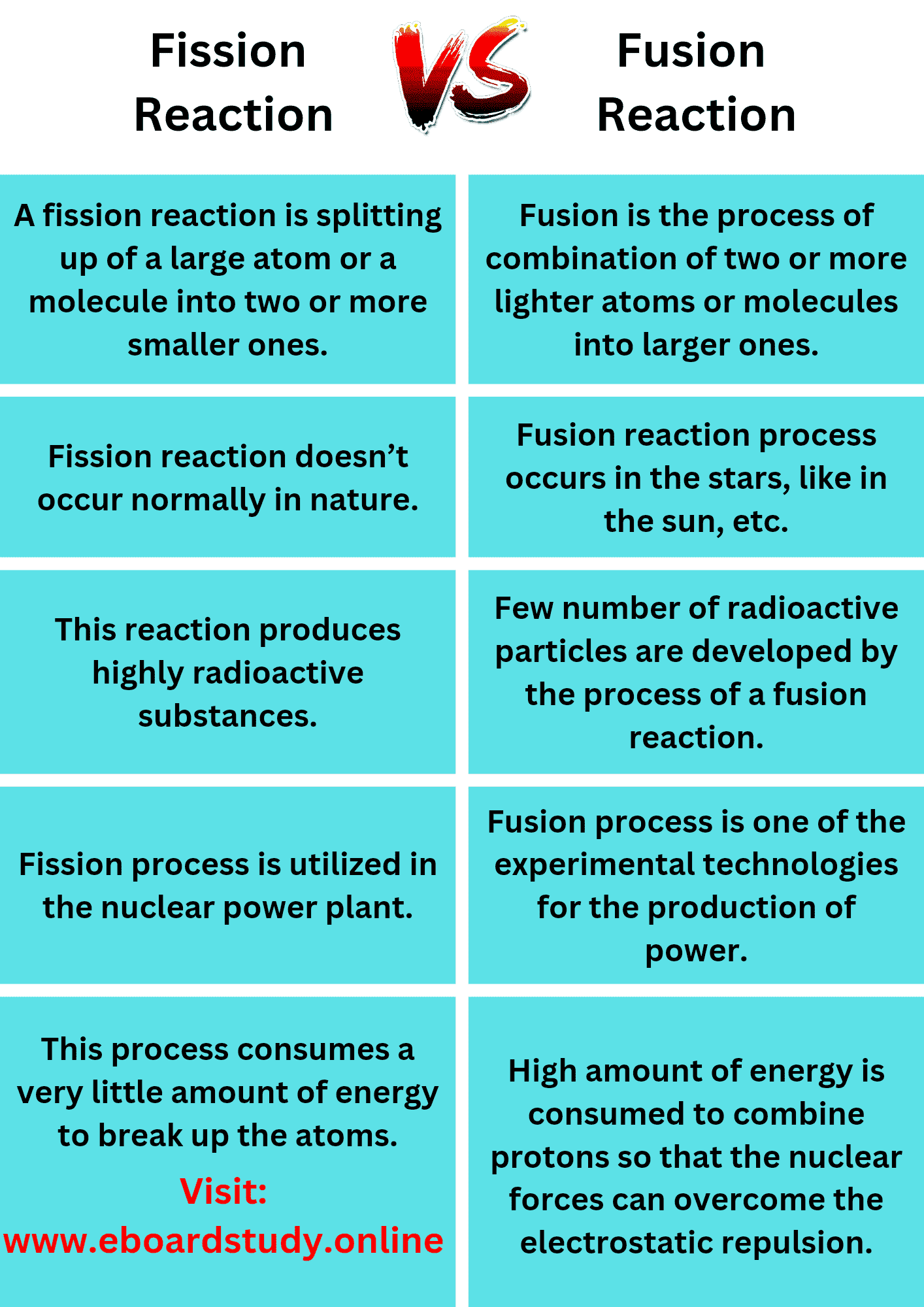What is fission?
Fission is a nuclear reaction in which the nucleus of an atom is split into two or more smaller nuclei. This process releases a significant amount of energy and is the fundamental principle behind nuclear power plants and atomic bombs. Fission occurs when a heavy nucleus, such as uranium-235 or plutonium-239, absorbs a neutron and becomes unstable. The nucleus then splits into two smaller nuclei, releasing additional neutrons and a large amount of energy in the form of heat and radiation.
Fission reactions can be controlled or uncontrolled, depending on the purpose. In nuclear power plants, controlled fission reactions are used to generate electricity. The heat generated from the splitting of nuclei is used to produce steam, which drives a turbine connected to a generator. On the other hand, uncontrolled fission reactions occur in atomic bombs, where the goal is to release as much energy as possible in a short amount of time.

What is fusion?
Fusion, on the other hand, is the process of combining two or more lighter atomic nuclei to form a heavier nucleus. This process also releases a tremendous amount of energy and is the driving force behind stars, including our sun. Fusion occurs at extremely high temperatures and pressures, which allow the atomic nuclei to overcome their electrostatic repulsion and come close enough for the strong nuclear force to bind them together.
Unlike fission, fusion reactions require a substantial amount of energy to initiate and sustain. The most common fusion reaction involves the isotopes of hydrogen, deuterium, and tritium. When these isotopes are heated to millions of degrees Celsius, they collide with enough force to overcome the repulsive electrostatic force and combine to form helium, releasing a tremendous amount of energy in the process.
Differences between Fission and Fusion
- Definition: Fission is the process of splitting the nucleus of an atom into two or more smaller nuclei, while fusion is the process of combining two or more lighter atomic nuclei to form a heavier nucleus.
- Energy Release: Fission releases a significant amount of energy when the nucleus of an atom splits, while fusion releases an even greater amount of energy when atomic nuclei combine.
- Fuel: Fission reactions typically use heavy elements like uranium or plutonium as fuel, while fusion reactions involve light elements like hydrogen isotopes.
- Reaction Conditions: Fission reactions occur at lower temperatures and pressures, while fusion reactions require extremely high temperatures and pressures to initiate and sustain.
- Applications: Fission reactions are used in nuclear power plants to generate electricity, while fusion reactions are still being researched for their potential use in clean and abundant energy generation.
- Radioactive Waste: Fission reactions produce long-lived radioactive waste, which is a concern for disposal and storage, while fusion reactions do not produce long-lived radioactive waste.
Applications of Fission Reactions
- Nuclear Power Generation: One of the primary applications of fission reactions is in nuclear power plants. The heat generated from the fission process is used to produce steam, which drives turbines connected to generators, ultimately generating electricity. Nuclear power plants provide a significant amount of electricity to many countries around the world.
- Nuclear Weapons: Fission reactions are also used in the creation of atomic bombs and other nuclear weapons. Uncontrolled fission reactions, where a chain reaction occurs rapidly, can lead to a powerful explosion. Due to the immense energy released during fission, it has the potential for devastating destruction.
- Isotope Production: Fission reactions are utilized to produce various isotopes that have important applications in medicine, industry, and scientific research. For example, the radioisotope technetium-99m is used in medical imaging procedures like single-photon emission computed tomography (SPECT).
- Research and Development: Fission reactions are extensively studied and researched to improve nuclear technology and understand the behavior of atomic nuclei. This research helps enhance the safety, efficiency, and sustainability of nuclear power generation.
- Radioisotope Thermoelectric Generators (RTGs): RTGs use the heat generated by the radioactive decay of certain isotopes produced through fission reactions to generate electricity. RTGs have been used in space missions, such as those exploring distant planets, where solar power is not feasible.
- Propulsion Systems: Fission reactions have been considered for advanced propulsion systems for space exploration. The idea is to utilize the energy released by fission to propel spacecraft at high speeds, significantly reducing travel time to distant destinations within our solar system.

